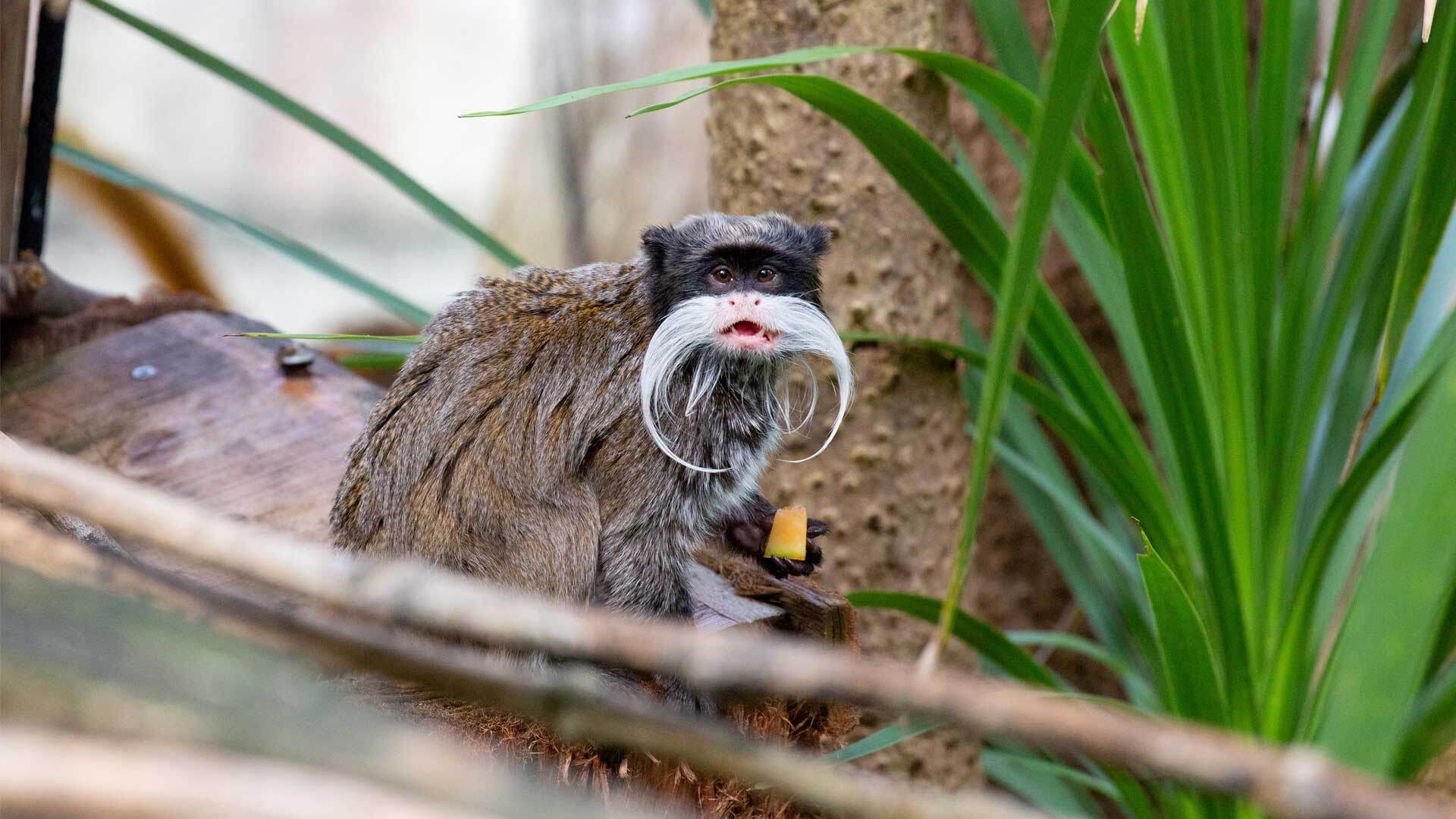
Ever seen a monkey with a mustache? Meet the Emperor Tamarin, a small primate with a big personality and an even bigger mustache. These fascinating creatures, named after Emperor Wilhelm II of Germany, sport impressive facial hair that makes them look like tiny, wise old men. Found in the lush rainforests of South America, particularly in Peru, Brazil, and Bolivia, these tamarins are social animals living in groups of up to 15 members. They communicate through a variety of vocalizations, from whistles to chirps. Curious about what they eat? Their diet includes fruits, insects, and even small reptiles. Ready to learn more? Let's dive into 20 great facts about these mustachioed marvels!
What is an Emperor Tamarin?
The Emperor Tamarin is a small monkey known for its distinctive mustache. Native to the Amazon rainforest, these primates captivate with their unique appearance and social behaviors.
-
Named After Royalty: The Emperor Tamarin got its name because its mustache resembles that of German Emperor Wilhelm II.
-
Small Size: These monkeys are quite small, typically weighing around 1 pound and measuring about 9-10 inches in body length.
-
Long Tail: Despite their small size, they have a long tail that can reach up to 16 inches, which helps them balance while navigating trees.
-
Diet: Their diet mainly consists of fruits, insects, and tree sap. They use their sharp claws to dig into tree bark to access sap.
-
Social Creatures: Emperor Tamarins live in groups of 2 to 8 individuals. These groups usually consist of a dominant female, several males, and their offspring.
Unique Features of Emperor Tamarins
These monkeys stand out not just for their mustaches but also for other fascinating traits that make them unique among primates.
-
Distinctive Mustache: Both males and females sport a long, white mustache that curls downward, giving them a wise, old-man appearance.
-
Vocal Communication: They communicate using a variety of vocalizations, including whistles, chirps, and trills, to maintain group cohesion and warn of predators.
-
Agile Climbers: Their small size and long tails make them excellent climbers, allowing them to move swiftly through the dense forest canopy.
-
Coloration: Emperor Tamarins have a mix of grey, black, and brown fur, with a reddish-orange tail, making them quite colorful.
-
Lifespan: In the wild, they live up to 10-12 years, but in captivity, they can live up to 18 years due to better care and absence of predators.
Reproduction and Family Life
Understanding their reproductive habits and family dynamics offers insight into their complex social structures.
-
Polyandrous Groups: The dominant female mates with multiple males, a rare trait among primates, ensuring genetic diversity within the group.
-
Parental Care: Males play a significant role in caring for the young, often carrying them on their backs and sharing food.
-
Births: Females typically give birth to twins, although single births and triplets can occur. This increases the survival rate of the offspring.
-
Weaning: The young are weaned at around 3 months old but remain dependent on the group for several more months.
-
Learning Through Play: Juveniles engage in play-fighting and other activities that help them develop the skills needed for adult life.
Conservation Status and Threats
Despite their charming appearance, Emperor Tamarins face several threats that impact their survival.
-
Habitat Loss: Deforestation in the Amazon rainforest poses a significant threat to their natural habitat, reducing the areas where they can live and find food.
-
Predators: Natural predators include birds of prey, snakes, and wild cats, which they evade using their agility and group vigilance.
-
Conservation Efforts: Various organizations are working to protect their habitat and raise awareness about the importance of preserving these unique primates.
-
Captive Breeding Programs: Zoos and conservation centers participate in breeding programs to help maintain the population and study their behavior.
-
Legal Protection: They are protected under various international laws and agreements aimed at preventing their capture and trade.
Final Thoughts on Emperor Tamarins
Emperor tamarins are fascinating creatures with their distinctive mustaches and lively behaviors. These small primates, native to the Amazon rainforest, exhibit unique social structures and communication methods. They live in groups, often led by a dominant female, and use vocalizations to maintain group cohesion. Their diet consists mainly of fruits, insects, and small vertebrates, showcasing their adaptability. Conservation efforts are crucial to protect their habitats from deforestation and human encroachment. By understanding and appreciating these remarkable animals, we can contribute to their preservation. So next time you think about the Amazon, remember the emperor tamarin and its vital role in the ecosystem. These tiny primates remind us of the incredible diversity of life on our planet and the importance of safeguarding it for future generations.
Was this page helpful?
Our commitment to delivering trustworthy and engaging content is at the heart of what we do. Each fact on our site is contributed by real users like you, bringing a wealth of diverse insights and information. To ensure the highest standards of accuracy and reliability, our dedicated editors meticulously review each submission. This process guarantees that the facts we share are not only fascinating but also credible. Trust in our commitment to quality and authenticity as you explore and learn with us.


